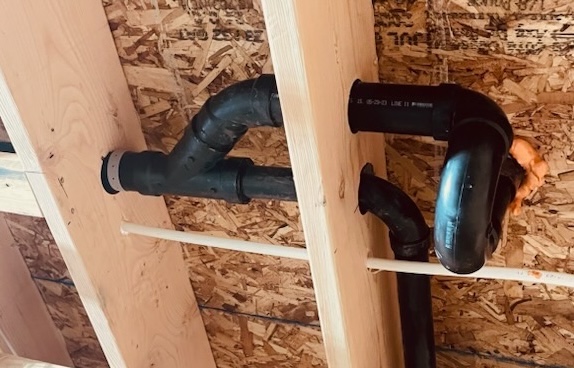
Why Holes Matter: The Core Principles
Drilled holes reduce a beam’s cross-sectional area and create stress concentrations. This directly compromises its capacity to resist the two primary forces acting upon it.
Holes reduce the section modulus, weakening the beam’s ability to resist bending. This effect is most severe for holes located far from the beam’s central neutral axis, especially near the middle of the span where bending forces are highest.
Holes reduce the area available to resist shear forces. This is most critical near the beam’s supports, where shear forces are at their maximum. The material around the hole must handle a more concentrated flow of stress.
The Field Check: Permissible Zones & Limits
Before requiring complex engineering, check if the hole complies with common prescriptive guidelines. The location of a hole is as important as its size.

Sawn Lumber vs Engineered Wood
Engineered wood products like LVL and Glulam have different, often more restrictive, rules than standard sawn lumber due to their optimized internal structure.

Impact of a Hole on a Sawn Lumber Beam
For a standard sawn lumber joist or beam, code often permits a hole up to one-third of the beam’s depth. This visual shows how significant that reduction is.

Red Flags: When to Call Blue Sky Engineering
If you observe any of the following conditions, the situation is outside prescriptive limits and requries a detailed structural analysis from Blue Sky Engineering. Do not proceed without professional sign-off.
Exceeds Size Limits
The hole is larger than 1/3 the depth for sawn lumber or exceeds the manufacturer’s spec for engineered wood.
High Stress Zone
Located in the end quarters of the span, or near the top/bottom edges in the middle of the span.
Not Round
The hole is square, rectangle, or any shape that creates sharp corners, which are points of high stress concentration.
To Many Holes
Multiple holes that are too close together or exceed the number permitted per span length.
Used for Loads
A pipe, bolt, or hanger passing through the hole is supporting a significant load.
Visible Distress
There are any signs of cracking, splitting, or sagging originating from or near the hole.
The Engineering Deep Dive By Blue Sky Engineering
When an analysis is required, an engineer from Blue Sky Engineering follows a systematic process to quantify the impact of the hole and ensure the beam’s safety.
1) Calculate Forces
Determine the exact Shear (V) and Moment (M) at the hole’s location.
2) Reduced Section Properties
Calculate the net section modulus (S_net) and shear area (A_net,v).
3) Check Design Capacities
Compare calculated stresses to the wood’s allowable stress values (F’b, F’v)
4) Check Deflection
Verify the beam won’t sag excessively under load with its reduced stiffnes (I_eff).
5) Reinforce/Approve
If needed, design reinforcement (e.g. steel plates) or approve the condition.
Always Err on the Side of Caution.
This field guide is for informational purposes and does not replace professional structural engineering analysis. When in doubt, contact Blue Sky Engineering.
